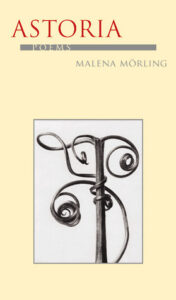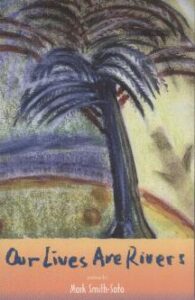April is National Poetry Month—no, don’t look away! You may be here for nonfiction advice and wonder what poetry has to do with it. Everything. Here are three specific things…
Poetry techniques can enhance your nonfiction
Poetry predates written text and likely was used as a way of making it easier to remember oral history. If you can use poetic techniques to make your nonfiction more memorable, might that not make poetry worth considering? (And that’s not to mention the emotional benefits poetry holds.)
Here’s a great article from editor Rita Lewis on three poetry techniques—imagery, rhythm, and figures of speech—that can help you draw readers in, manage pace, and make high-level concepts stick: 3 Writing Techniques Nonfiction Authors Can Borrow from Poetry.
Reading poetry can help hone your use of language
In honor of poetry month, I’ve been worming my way through a stack of poetry books. While I don’t like all the poetry I read (really, you don’t have to like every poem!), I do always learn from the ways other writers use words. And learning by example is one of the best ways to improve your writing.
Here are two books I do like from North Carolina poets, so if you’re feeling adventurous, check them out.
Astoria by Malena Mörling
Malena Mörling is a Swedish-American poet who teaches creative writing at UNC-Wilmington. I first met her in a poetry translation workshop. (And, yep, I’ve studied Swedish.) Her work is minimalist and even stark at times, but clean and clear, as in “The Floating World”:

In the floating world
nothing is
what it was,
not this thought
that drifts off,
not these words
or the meaning
of these words.
I am not who I was
or who I will be,
here on this beach
that is also a desk
the waves
are trying to climb.
One thing I strive for in editing is concision, and Malena’s work demonstrates concision beautifully. But don’t you also love that image of the beach as a desk?
Our Lives Are Rivers by Mark Smith-Soto
Mark Smith-Soto is a professor of romance languages at UNC-Greensboro. I believe I was first introduced to his work through SPARKcon, a creativity festival in Raleigh, and I’ve enjoyed hearing him read several times. Mark often writes in a poetic form, such as a sonnet, which you might think of as stiff or formal, but Mark’s work is quite accessible, as in “As Good As It Gets”:

Manuel thinks his cocoa tastes sort of gross,
he licks the whipped cream off the top, takes
a bit of his cookie and wrinkles his nose,
he’s tasted worse but it’s no great shakes
which is too bad, I say, and lean down to blow
on my Sumatra which is much too hot, we
wanted Ping-Pong but the place was closed,
so we sit at the metal table and complain as if we
had nothing better to do, which we don’t,
and there is a bird song in the air or in my ear,
I can’t tell for sure anymore, and Manuel wants
a Coke but we’re a nickel short for the machine,
he shrugs his shoulders and grins. We’re doing OK
outside the Harris Teeter, Sunday, March, today.
In this case the subject matter is familiar and relatable, and the sonnet form helps emphasize musicality and rhythm, pulling the reader along—which is often what nonfiction needs to do as well. (Also, did you notice all the near-rhymes at the ends of the lines? Subtle, huh?)
Poetry can be part of your nonfiction
When I was still new to poetry and firmly ensconced in the corporate world, I was shocked to discover Jim Autry’s Love and Profit: The Art of Caring Leadership. Jim was the CEO of Meredith Corporation (publisher of Better Homes and Gardens) and also a poet, and his book alternated between essays and poems about corporate management. This poem, “What Personnel Handbooks Never Tell You,” has always stuck with me:

They leave a lot out of the personnel handbooks.
Dying, for instance.
You can find funeral leave
but you can’t find dying.
You can’t find what to do
when a guy you’ve worked with since you both were pups
looks you in the eye
and says something about hope and chemotherapy.
No phrases,
no triplicate forms,
no rating systems.
Seminars won’t do it
and it’s too late for a new policy on sabbaticals.
They don’t tell you about eye contact
and how easily it slips away
when a woman who lost a breast
says, “They didn’t get it all.”
You can find essays on motivation
but the business schools
haven’t codified what the good manager says
to keep people taking up the slack
while someone steals a little more time
at the hospital.
There’s no help from those tapes
you pop into the player
while you drive or jog.
They’d never get the voice right.
And this poem won’t help either.
You just have to figure it out for yourself,
and don’t ever expect to do it well.
Wow. A business book with poetry. Who knew you could do that?
If you’ve been working hard on your nonfiction, do yourself a favor and go read a few poems. See if something new bubbles up. Maybe you’ll get unstuck or find a new idea or realize a better way to phrase something. If nothing else, simply marvel at the ability humans have to create beautiful language.
I love helping clients craft stronger nonfiction books, and my poetry practice is one of the things that’s given me the tools to do so. If you’d like to talk about your nonfiction book and see what the possibilities might be, get in touch at karin@clearsightbooks.com.


